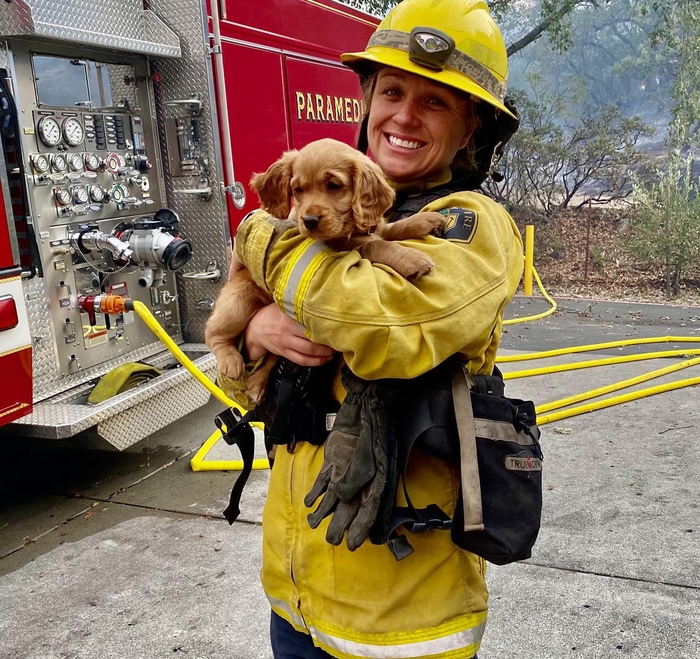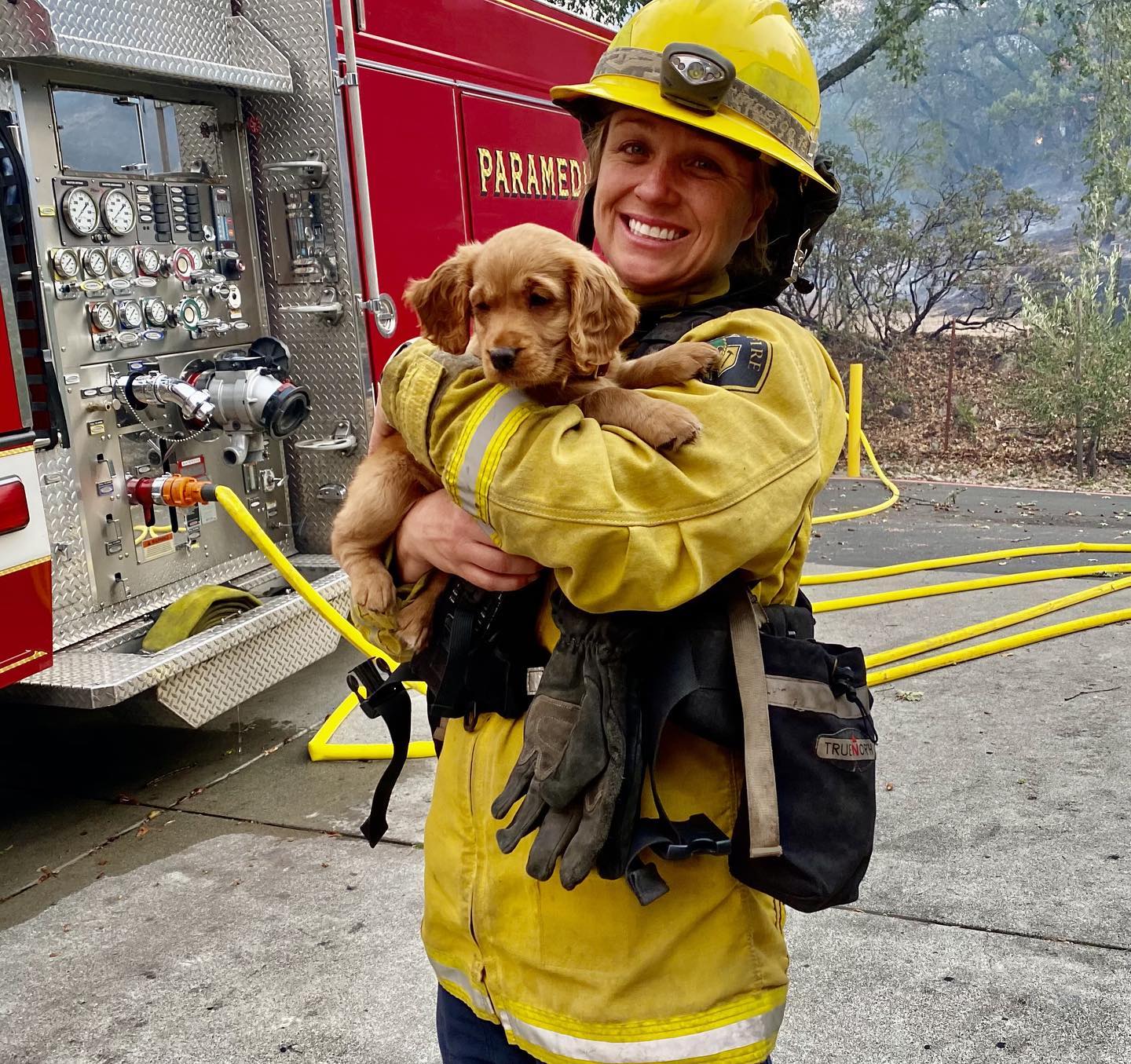Blog
Keeping Pets Safe During Fires and Other Disasters


The Role of Dedicated Animal Protection Organizations During Emergencies
Jameson Humane and other animal welfare and rescue organizations play a vital role during wildfires and other calamities in securing pets that become loose or lost, and in protecting, sheltering, and arranging for treatment of animals impacted by disaster. Throughout the country, volunteer-based organizations have been formed to offer disaster preparedness training and to provide emergency services and other resources needed for animal rescues during catastrophic events. One such exemplary organization in Napa County, California is the Napa Community Animal Response Team (CART). Jameson Humane partners with CART in their shared mission to protect animals and serves on CART’s Community Advisors Board. CART also coordinates their efforts closely with the Napa County Office of Emergency Services and the Napa Sheriff.
CART’s mission includes educating the public on how to prepare for disasters in order to protect animals, providing disaster response and recovery services by sheltering, evacuating and caring for animals (including providing “animal-specific rescue equipment”), and training first responders and community volunteers in animal rescue and trauma care practices. Just one example of the vital animal rescue services of CART – working hand-in-hand with the Napa County emergency operations team and CART’s partner organizations such as Jameson Humane – were those provided during the 2020 LNU Lightning Complex fire. According to CART’s summary of the outcome of the team’s efforts, nearly 400 domesticated animals of many kinds (ranging from cats to llamas to horses) were evacuated, provided with shelter, or transported to veterinary hospitals. For more information about CART (and to find out how to volunteer), go to
https://napacart.org/volunteer/
How to Prepare for Disasters and Emergencies With Your Animals In Mind
Jameson Humane’s website includes detailed articles on disaster preparedness for (1) cats and dogs, (2) horses, and (3) farmed animals. You can explore those pages by going to the home page of this website, highlighting the top menu item of “Our Work,” and clicking on disaster preparedness or you can use the following link: https://www.jamesonanimalrescueranch.org/our-work/disaster-preparedness.
For cats and dogs, Jameson provides a detailed checklist of things to include in an evacuation kit:
- Pet first-aid kit and guide book (ask your vet what to include)
- 3-7 days’ worth of canned (pop-top) or dry food (be sure to rotate every two months)
- Disposable litter trays (aluminum roasting pans are perfect)
- Litter or paper toweling
- Liquid dish soap and disinfectant
- Disposable garbage bags for clean-up
- Pet feeding dishes and water bowls
- Extra collar or harness as well as an extra leash
- Photocopies and/or USB of medical records and a waterproof container with a two-week supply of any medicine your pet requires (Remember, food and medications need to be rotated out of your emergency kit—otherwise they may go bad or become useless)
- At least seven days’ worth of bottled water for each person and pet (store in a cool, dry place and replace every two months)
- A traveling bag, crate or sturdy carrier, ideally one for each pet
- Flashlight
- Blanket
- Recent photos of your pets (in case you are separated and need to make “Lost” posters)
- Especially for cats: Pillowcase (for cats to hide in or for emergency transport), toys, scoop-able litter
- Especially for dogs: Extra leash, toys and chew toys, a week’s worth of cage liner
- You should also have an emergency kit for the human members of the family. Items to include: Batteries, duct tape, flashlight, radio, multi-tool, tarp, rope, permanent marker, spray paint, baby wipes, protective clothing and footwear, extra cash, rescue whistle, important phone numbers, extra medication and copies of medical and insurance information.
The same Jameson webpage also includes three essential steps to take to be fully prepared for emergencies:
Step 1: Get a Rescue Alert Sticker
These are stickers to affix on or near the front door stating that you have pets inside the home. The sticker should describe the number and types of animals and provide the name and phone number of your veterinarian. A form to use for such stickers is available on the ASPCA website or at most local pet supply stores. The rescue alert sticker might also include (or be accompanied by) the pet identification information recommended by CART (see below).
Step 2: Choose Designated Caregivers (both Temporary and Permanent)
For temporary caregiving if needed, select someone you trust who lives close to home and who is generally home during the daytime. Give them keys to your residence.
You should also select someone (after making sure they are willing) to act as a foster parent for your pets on a longer-term basis if necessary. Your selections might also be something to include on the rescue alert sticker (see Step 1 above).
Step 3: Arrange a Safe Haven
Arrange a safe haven for your pet in the event of evacuation. Above all, if possible, do not leave your pet behind. Before the need to evacuate arises, determine where you can house your pet. Among the resources to contact in order to make that determination are your veterinarian (who should have a list of preferred kennels and other facilities), your local animal shelter, and hotels or motels outside the immediate area that allow pets, and friends and relatives outside your immediate area who would be willing to take in your pet.
CART also provides extensive advice and checklists to help prepare and protect your animals for emergencies and disasters. See, https://napacart.org/emergency-preparation/pre-plan-for-emergency/ That webpage provides links to valuable resources for all kinds of animals, including livestock and horses. Among many tips offered, CART encourages all pet owners to do the following:
- Sign up for the NIXLE emergency notification system in your area
- Complete a pet identification sheet for each of your pets and attach a photo of you and them together. Place the sheet in a laminated sleeve and post it in a visible spot near your pet food storage area. (The full contents of the identification sheet are set forth on a linked webpage).
Caution: Pets May Be Preyed Upon or Injured by Displaced Wildlife During Fire Season
The San Francisco Chronicle carried a story during Napa County’s devastating Glass Fire in October, 2020, about the many wild animals that were displaced by the fire and forced to seek refuge in populated areas. https://www.sfchronicle.com/california-wildfires/article/Glass-Fire-zone-teeming-with-displaced-wildlife-15628837.php Cal Fire Battalion Chief Sean Norman told the paper that during the Glass Fire he had seen more mountain lions than in his entire firefighting career. He advised pet owners to be especially watchful of their pets.
The danger posed to pets during such fires comes not only from predators such as mountain lions, coyotes, bobcats or bears, but also from other animals such as deer who may attack pets and people if they feel threatened. John Comisky, President of Napa Wildlife Rescue, observed: “Full-grown deer are one of the most dangerous things in the forest . . . Their front hooves are very sharp — with one slip, they can disembowel a human.” Consequently, he advised that the overriding rule is to avoid contact with wildlife. Mr. Comisky also stated that the danger to pets posed by potential encounters with wild animals could extend for several weeks beyond a fire’s extinction, while wildlife migrates back to the wilderness.
Pet owners should, therefore, limit their pets’ outdoor activities during fires and for several weeks afterward, and maintain close supervision when they are out. Dr. Deana Clifford, senior wildlife veterinarian for the California Department of Fish and Wildlife, warned pet owners never to leave pet food and water outside the house, as this may attract wildlife. Dr. Clifford advised people to check any crawl spaces under their homes and accessory structures periodically because they may be used by wildlife for shelter.
